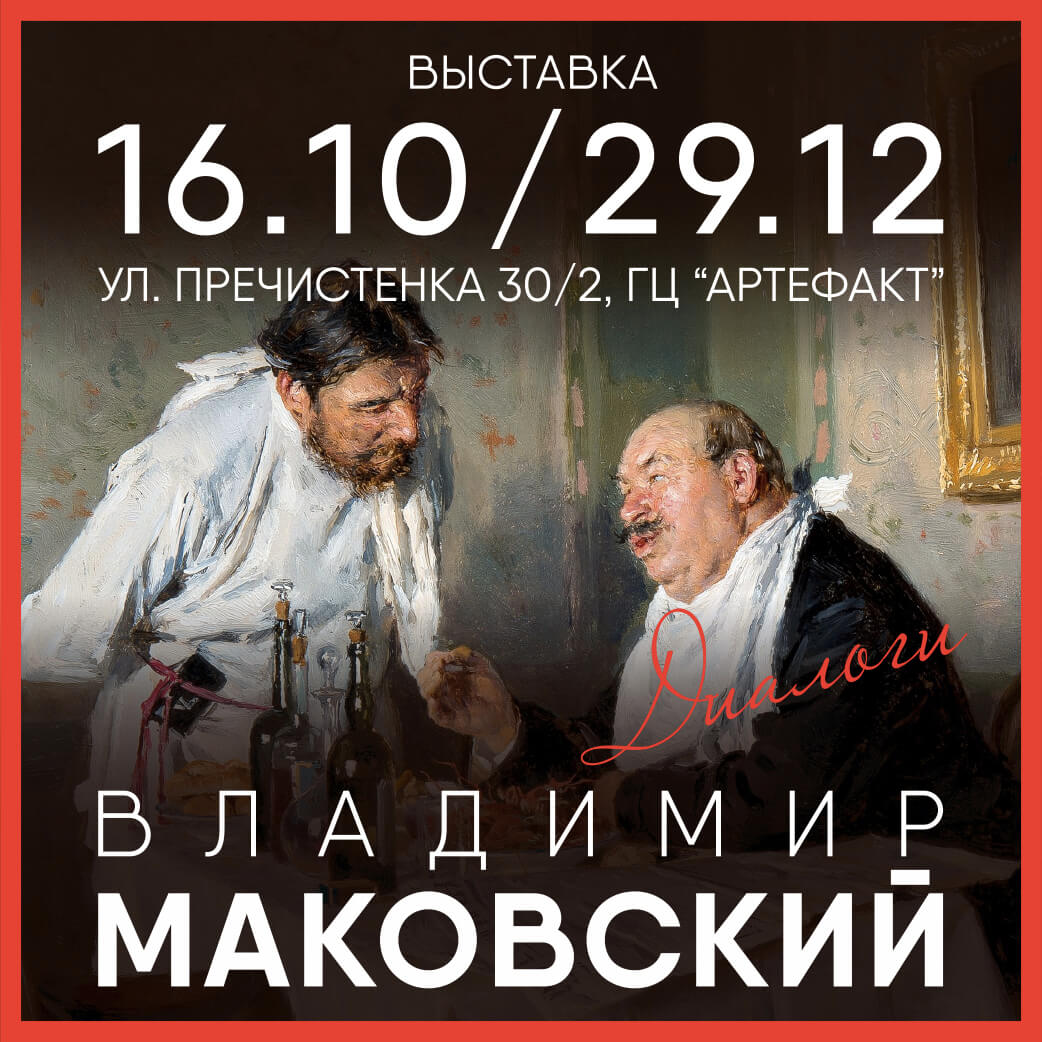Brief history of forgery
The history of forgery has not one thousand years. In abbreviated translation articles French explorer Adrian Darmon are the main milestones of development crafts, and even art scam and rigged from time immemorial to the present day
nepodlinnyh history of art has for thousands of years. To comply with the rituals and worship the gods required statues and sacred objects, and in large quantities. Original at all lacking. So there were copies. If you want to - the essence of the same forgery. First, people have learned to imitate the methods of production of these objects, then their identity ... In the era of ancient civilizations the demand for art has been very high. Egyptian artists and craftsmen supplied «source of inspiration» various copyists from neighboring countries, and later - the Greeks. The Art of Mesopotamia to be copied in the Middle East and Central Asia and even in China.
In the powerful Roman Empire, the main inspiration for all artists is the legacy of the ancient Greeks. Some of the masterpieces of Greek art were the basis of the canons of beauty of the Romans. First Greek statues just made up, but the rich Patricia at all was wanted to own the originals. For example, some merchants have discovered a way to quickly learn: the perfect mastering the art of counterfeiting, they were selling copies of a rich man under the guise of this ancient Greek sculptures.
It is necessary to delineate the concept of «copy» and «forgery». Creating copies of itself can be quite innocent assumption - so many young artists with the most ancient times, copied the works of masters, in order to learn as well to create works of art, as they are. The fate of these copies was different: some artists to cut them as for the conventional study, while others sell them as a fairly simple imitation of the original. Others simply forget about them and left in the studio (where they were then able to find and accept /surrender of the originals of the famous painters). Some saw this as a way to make money and have a backup copy solely for the purpose of selling under the guise of any well-known works. In general, when the purpose of the person who copies the work of art becomes a deception, it becomes a normal copy of forgery, «falshakom». As we have seen, even in the age of antiquity, many understand that the stamping of here «obmanok» You can earn a very good idea ...
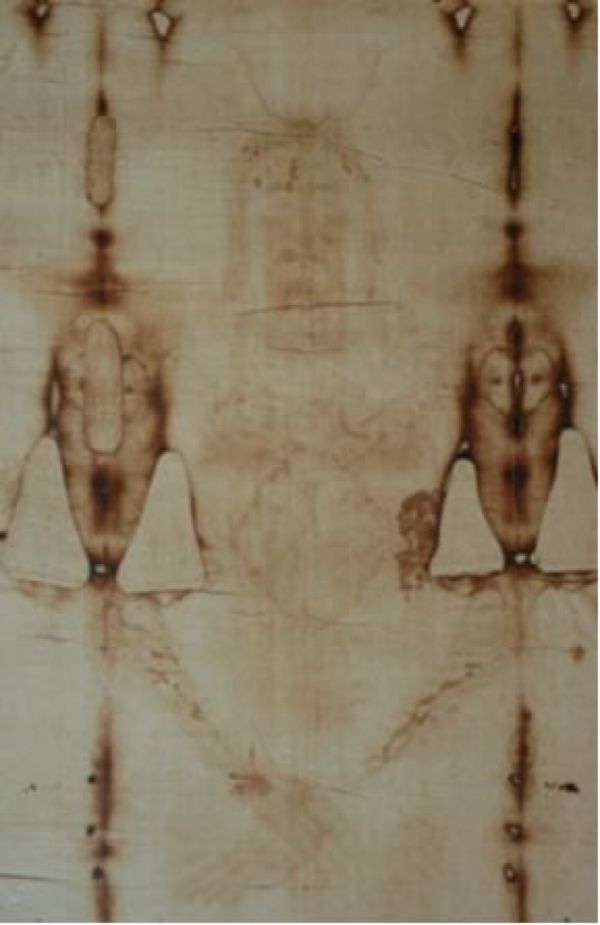
The Turin Shroud. Fragment.
Source: new.chronologia.org
Industry imitations of ancient Rome was suppressed with the advent of the barbarians. Barbara did not differ toleration and tolerance: they destroyed the temple (remember most of the works of art were religious), destroyed the ancient statues. With the spread of Islamic threats to the ancient and Christian products has become even more: the Koran forbids any image of man and animals. Many ancient monuments, and later Christian culture had been lost forever.
well established in Europe, Christianity, in turn, found their inviolable canons of creating works of art. Religious art has now become everything. From VI to XIV century fakes did not appear. Forged only relics of saints, and various Christian relics. The most famous example of such religious forgery is considered the Turin Shroud. Has long been argued that this relic - the same cloth, in which Joseph of Arimathea wrapped the body of Jesus after his suffering on the cross. Scientific analysis showed shroud of Christ, that it was created no earlier XIII century, but even this is not dissuaded by Christians who continue to believe that the canvas - indeed influenced body Son of God.
At the dawn of the Renaissance a new trend: the artists began to receive orders not only from the church. Kings and princes, as well as Roman and Patricia for many centuries before them, have to collect works of art, and patronize their creators. At the end of the XIII century it was re-opened the art of antiquity. Painters and sculptors of the Italian Renaissance started to paint in his works of mythological characters, nudity ... antiquity admired by such important artists as Donatello (Donatello), Andrea Verrokko (Andrea Verrocchio), Antonio del Pollayolo (Antonio del Pollaiolo), Andrea Riccio (Andrea Riccio) , Jacopo Sansovino (Jacopo Sansovino), Michelangelo (Michelangelo), Dzhambolonya (Giambologna), Stefano Maderno (Stefano Maderno), Takka Pietro (Pietro Tacca), etc. Copy of Greek and Roman masters became standard practice and mandatory part of training young artists and sculptors. Of course, the fascination with the masters of antiquity led to a multitude of imitations, which do not manufacture Tchuraev and famous artists. Michelangelo, for example, used a fake in order to teach a Cardinal, obidevshego his words, that his work «falls short» to the ancient artists. The famous artist created the sculpture and presented it to Cardinal under the guise of a Roman. Learning that it cheated, prelate of rage broke the statue. Even then the original works of art was given great importance. But «spoil» creating counterfeit artists have not stopped. In the XVII century, many of them, desiring to obtain favors monarchs, gave them copies of their favorite artists. At the beginning of a career that involved artists such as Velázquez (Diego Rodríguez de Silva y Velázquez) and Lebrun (Charles Le Brun).
Some artists copied the work of celebrities, so epatirovat the audience: for example, titanium Renaissance Rafael (Raphael) created several «Perugino paintings» (Pietro Perugino). A century later, Van Dyck (Anthony Van Dyck) play writing «Rubens», and another two centuries, the painting in the style of the same Rubens (Peter Paul Rubens), and Dreams (Jean-Baptiste Greuze), Watteau (Jean-Antoine Watteau) and Velazquez made French Romantic Eugène Delacroix (Eugène Delacroix).
In the XIX century forgery industry has reached a decent scope. Collecting art is no longer a privilege of aristocrats. The role of industrialists and businessmen in the community has become increasingly important, in their hands concentrated great wealth and, consequently, the demand for art has increased many times.
In the XVIII century, became popular works of Flemish painters century-old, who actively copied artists of the second rank. Many of these copies were later found vendors selling paintings, and as the originals. A century later, increased the popularity of the XVIII century - Watteau, Fragonard (Jean-Honoré Fragonard), Boucher (François Boucher), Reynolds (Joshua Reynolds) and Gainsborough (Thomas Gainsborough), - hence, a huge number of imitators, whose works settled in the collections of wealthy bourgeois under the guise of the paintings of great masters.
On the demand was influenced by this factor and, as a fashion for travel to Europe, introduced by British aristocrats in the early XVIII century. XIX century nouveau riche who chooses to follow this fashion and travel, for example, in Italy, wanted to buy a bed, another of a famous old masters. Of course, naive tourists are often befool enterprising sellers podsovyvaya them forgeries. The flourishing of tourism in Italy has led to the emergence of entire artels producers «falshakov», specializing in the manufacture of «the paintings of Italian primitives», which sold like hot cakes. Falsifiers began to develop new technologies: for example, the mechanical production of reduced copies of the sculptures, «due» by bronze statues of steel forge an industrial scale. French architect and theorist Eugène Emmanuel Violle-le-Duc (Eugène Emmanuel Viollet-le-Duc) was a pioneer of fashion in the Middle Ages, and copyists immediately rushed to produce false Limoges enamel. Nevertheless, in the XIX century «scale» rigged-up still was not that huge. Only one case of bogus to truly roused the public - when the Louvre bought a gold tiara, allegedly created by Scythian nomads, but in fact were the work of the Odessa jeweler Israel Ruhomovskogo.
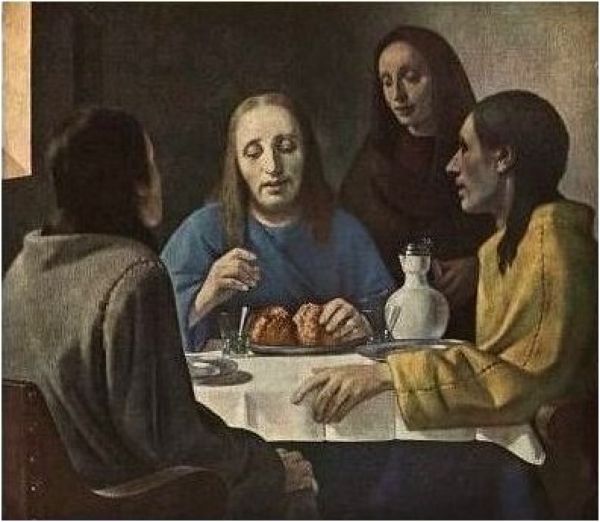
HAN VAN MEEGEREN Christ to Emmaus. Source: tnunn.f2s.com
famous museum had been deceived by two swindler brothers Hohmanami (Hochman). They announced that the tiara (which was engraved the inscription «the king of the great and invincible Saytafarnu. Olviopolitov the Council and the people») was found in southern Russia on the territory of ancient Olbia, Louvre and sold for one million francs. Tiara was put on display spectators 1 Apr, 1897 (which symptomatic date!). But soon specialists doubted the authenticity of precious exhibits: very very well preserved inscription on the tiara, as if it did, more recently, not 23 years ago! Custodian of the Munich museum announced that the tiara was «sleplena» of the ancient elements of different origin. The investigation resulted in the studio of the brothers Hohmanov in Ochakovo. Israel Ruhomovsky said that he created a tiara, but he did not know that it will be used as a forgery and the Louvre get in under the guise of the ancient works. To the French experts believe that it was he who made tiara, Ruhomovsky arrived in Paris and in front of the Louvre wonderstruck experts recreated part of the precious headgear.
A similar case occurred in 1873, when the other brothers, named Penelli (Penelli), produced «Etruscan sarcophagus» and sold it the British Museum. Several decades before the sarcophagus as the main exhibit hall of the Museum of Etruscan, until one of the brothers, muchimy remorse, do not tell the truth.
One of the forging of painters at the time was the famous Jean-Baptiste Camille Corot (Jean-Baptiste Camille Corot). Moreover, it is often collected in his workshop enthusiastic imitators, whose paintings he sometimes «patch up». For puschego chic, he put his signature on them. Now it is almost impossible to understand: what of the «Kingdom» original, and what did not ... Maybe what we can see in some of the museums - the work of talented imitators. Another artist, whose paintings are many forged during his life, was Adolf Monticello (Adolphe Monticelli), a famous virtuoso his possession impasto technique.
In late 1870-ies in the artistic arena came the Impressionists. Innovative and visionary art dealers like Paul Durand-Ruelle (Paul Durand-Ruel), as well as the almighty American collectors, tycoons, and some Russian aristocrats first saw indisputable artistic value of Édouard Manet (Edouard Manet), Claude Monet (Claude Monet) , Camille Pissarro (Camille Pissarro), Pierre-Auguste Renoir (Pierre-Auguste Renoir), and others. Actively forge these artists were in the First World War. Then the industry «falshakov» reached unknown before flowering: At the end of the war Brussels falsifiers sell a huge number of imitations of German officers occupying army. Alone «Kingdom» has sold at least 10 thousand! .. Many have begun to forge Impressionist paintings, as well as works by Cezanne (Paul Cézanne) and Van Gogh (Vincent van Gogh). Even the Maurice de Vlamink (Maurice de Vlaminck) at the beginning of his career, is engaged in manufacturing «Kingdom» and «Cezanne», that had to live ...
In the 1920's increased the demand for works by Vincent Van Gogh, who became famous through the fifteen years after his death. As directory-reason artist has not yet been published, give a picture of Van Gogh's something skillfully made fake, it was not very difficult. In the 1920's increased the number of art lovers, and many sellers of works of art (even dear as the famous antiquarian Lord Dyuvin (Lord Duveen)) do not provide false brezgovali «Van Gogov» not very skilled in painting a rich man.
«Golden Age» rigged came in the second half of 1920-ies. Forged not only a painting - in Orleans, for example, there Salon Mayfera André (André Maifert), which produced «furniture XVIII Century». Copies were so good that no one thought to doubt that it is original. Sam Andre Mayfer was not involved in the marketing of their products. He never challenged the «authentic» of which he delivered in antique shops, and very proud that produces such high quality furniture.
In the 1930's and the Dutch painter Han van Meegeren (Han van Meegeren), displeased that his painting is not a success with critics, has decided to take revenge on them and provernul monumental fraud. Van Meegeren long does the restoration of paintings, and also taught painting in Delft, which allowed him to get a deeper understanding of the great works of Dutch Jan Vermeer (Jan Vermeer), whose paintings of art historians knew no more than forty. He burned the idea of «complement» the legacy of the famous master of Delft: decided to write a few paintings on religious themes, and extradite them for works of Vermeer, which thoroughly examined all of his painting technique.
«Random detect unknown Vermeer painting», it was easy: Delft master works were discovered only in the middle of the XIX century and the first retrospective (in Rotterdam) was already in the 1935-m. Three years earlier, enterprising falsifier Van Meegeren settled in Provence, where he took to study the technique of Vermeer and color pigments, used them in creating their masterpieces. In 1934, he acquired a picture of the XVII century, deleted from it and wrote a layer of paint on an old canvas «Christ in Emmaus». Under the guise of «accidentally found Vermeer» he presented this picture of an expert on the history of art Brediusu Abraham (Abraham Bredius), which saw the sensational find, almost fainted from excess of feeling - as good a job.
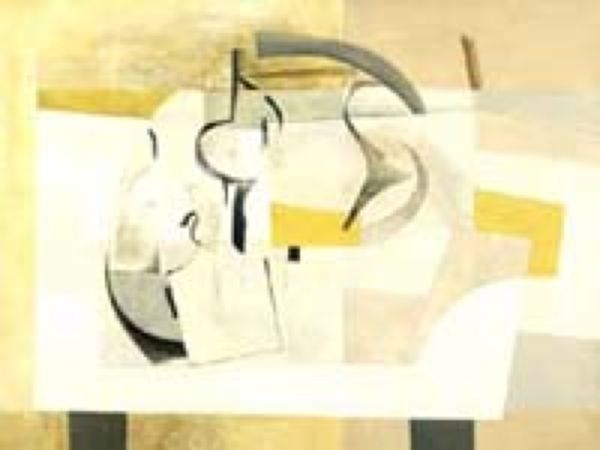
The work of Ben Nicholson, 1949.
Source: museum-security.org
fake was bought in 1937-m Royal Gallery Rotterdam (for 500 thousand florins). Encouraged by Van Meegeren began to stamp the new «Vermeer». Forgery appear one after another: first, «Isaac, Jacob benedictory», then «Last Supper», «Christ and the Sinner», «The Christ», «laundress» ... In 1943, the picture was written «lustration feet», which was sold to auction for 1.25 million florins.
Of course, some commentators could not help wonder: why this market has to appear so many unknown Vermeer, moreover, and with an unclear history of life? .. But in the troubled war years, few had the desire to seriously address this issue, so Van Meegerena business has flourished. Only when the Nazis were defeated, the government liberated countries to seriously address the problem of looted masterpieces. Van Meegeren, not to sell their brezgovavshy «Vermeer» enemy, too, came under suspicion. During the war he sold «Christ and the Sinner» and four of the Marshal Goering (Hermann Goering), and other high-ranking German officials. After the war, Van Meegeren was accused of collaboration for the sale of national treasures of Hitler's henchman. And he made a shocking recognition: it turns out, all the masterpieces, which he has nearly ten years of market stuff of art, were not written by Jan Vermeer of Delft, as they themselves ... According to Van Meegerena sale Goering «falshakov» was in fact an act of patriotism - it is just wanted fooled the Nazis.
falsifier said he bought paintings of XVII century and the pigments used, details of its technology sostarivaniya fakes ... But Van Meegerenu Dutch court did not believe, and he offered to write one more «Vermeer» in the presence of two experts. Painting «The Young Christ, preaching in the temple,» was not very good, but, nevertheless, persuaded judges that Van Meegeren did not squander the national treasure, but only to sell their forgeries. In the workshop of Van Meegerena pigments were found, similar to those used by Vermeer, as well as an unfinished painting, depicting a woman reading a letter.
Van Meegeren was sentenced to just one year in prison. But stress-tested during a rigged trial, led to his premature death. Van Meegeren had died of a heart attack on Oct. 31, 1947, just two weeks after the detention.
But we can say that Van Meegeren died winner: he be able to uteret nose all the critics who once called him a bad artist. With this history painting by Jan Vermeer previously acquired unprecedented popularity, although the curators of museums around the world were in a panic: it turned out that many «Vermeer» from their collections - fakes. Even the famous canvas «Girl for clavecin» was declared unreal. In 1993, the painting was presented to the examination of the auction house Sotheby's, and specialists took ten years to establish that the work is actually true. After restoration «Girl for clavecin» was sold in 2003 for more than 24 million Euro.
Now Van Meegerenu probably would not have been fooled: the methods of chemical analysis of works of art are much more sophisticated than in 1930-ies. But in the postwar period were craftsmen who were able to deceive not only art lovers but also professionals of high quality. For example, in the 1980's English swindler John Kokkett (John Cockett, he is John Drew (John Drewe)) sold fake paintings by Ben Nicholson (Ben Nicholson) and other famous painters, written by his associates - the non-artist John Mayattom (John Myatt) . Kokkett hit your friends with influence on the art market, to sign documents indicating that the paintings belong to them, and also produced a letter allegedly written by forged artists. Besides, he also found a way to penetrate into the archives of renowned museums (such as the Tate Gallery or the Institute of Contemporary Arts in London) and made the names of their imitations of the official rosters of business! Kokkett was arrested by Scotland Yardom in 1999 and sentenced to six years' imprisonment, of which spent in prison, two.
One of the most famous frauds in the world of art belongs to the end of 1960. The main actors were Hungarian Elmir de Hori (Elmyr de Hory) and his partner, a former ballet dancer Fernand Legros (Fernand Legros), who managed to put into the U.S. market a lot of fakes.
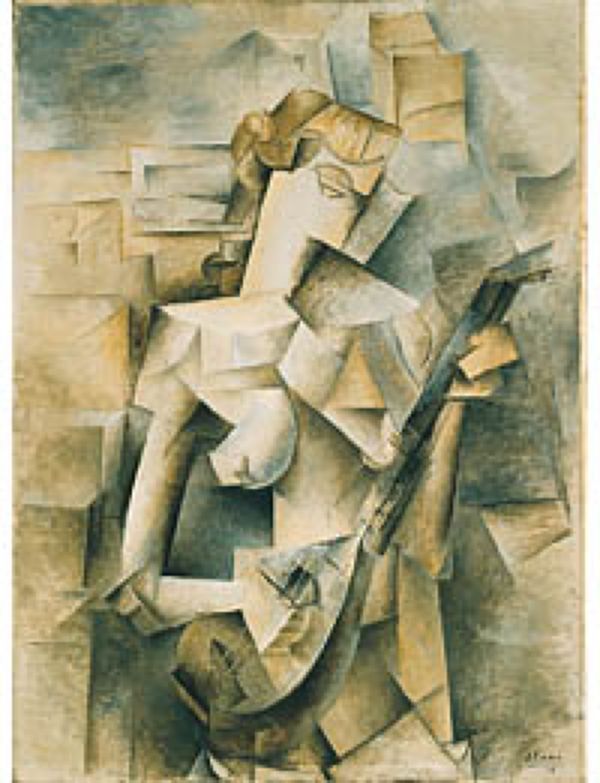
Pablo Picasso Girl with a mandolin. Source: museum-security.org
Elmir de Hori (aka Von Elmir Houri, who is also the Baron Elmir Hoffman, who is also Joseph Dori, who is also Joseph Dori-butene) was born in Hungary in 1905, from 1961 he lived on the island of Ibiza, issuing posing as a rich aristocrat in exile. At Ibiza de Hori stayed in a beautiful mansion, which arranged the secular parties, marked priststviem whole elite island. According to legend, de Hori amassed a great state in the sale of works of art, and friends with many celebrities, including the Salvador Dali (Salvador Dali). His serene life on Ibiza until such time as he learned of the arrest of his chief accomplice. Fernand Legros and his paramour Real Lessard (Réal Lessard) came to the sale of forged artworks modernists Texas oil magnate and art collector Elgeru Hertlu Medousu (Algur Hurtle Meadows).
Elmir de Hori early passion for art. At 18 years young man, the Budapest representative of «golden youth» decided to study painting and went to Munich. Later he moved to Paris, where from 1926 to 1932 years was in the studio of the great Fernand Leger (Fernand Léger). But a well-known painter de Hori never became. At the end of World War II de Hori has been without a penny: the Hungarian Communist government seized all the property from his wealthy parents. Esthete, sybarite and supporter of homosexual relations, he was required to provide your own food. But the usual clerical de Hori did not want to become. Without a penny in his pocket, he began to create imitations of works of famous artists - Pablo Picasso (Pablo Picasso), Henri Matisse (Henri Matisse), Amedeo Modigliani (Amedeo Modigliani). Soon, a few not very well versed in the art of the rich bought his work. So de Hori found a way to survive in war-torn Paris, tear, and even found a foreign client. He continued to deceive collectors and gallery owners until 1952, when a Los andzhelessky dealer denounced him and threatened to contact the police.
De Hori was very frightened by the prospect of arrest and imprisonment, and even attempted suicide. But in 1958, got acquainted with the 27-year-old «Art dealer» Fernand Legros, he again decided to embark on the unjust way. Legros, who in that time was already the father of the family, but do not deny yourself the pleasure of fun with the young Apollo, was go to the highest circles of society. According to rumors, idol Legros was Vakker Otto (Otto Wacker, he Olindo Lovael (Olindo Lovael)), also a former dancer, became art dealers. In the mid 1920's in Berlin Vakker provernul several very successful frauds thirty paintings Van Gogh. Renowned expert Bert de la Faye (Bert de la Faille) first found them true, but he guessed that he cheated. In 1932 Vakkera tried, and De La Faye has announced that five of its «Van Gogov» - did this.
De Hori initially felt very uncomfortable in front of a young eccentric Legros. He behaved as a cowboy in the Wild West, with hippovskuyu wore a beard, a huge amount of jewelry, black glasses, fur robes and boots of alligator skin. But this is the original secular helped de Hori regain a taste for life. He persuaded him to go with him to the United States, where falsifier again stamp forgery of paintings modernists.
The objective of an aging Hungarian gambler was very write the paintings, and his young partner has taken the search for rich clients. He also loved footle head of U.S. customs officials. When carried falshivok performed de Hori, customs officers to question «What's in a suitcase?» Legros invariably answered: «cc». Customs workers have refused to believe him, and invited experts, who concluded that the picture is actually true - so good was the quality of the work de Hori. Legros had to pay substantial fines, but the hands still remained expertise, which allows it to sell for huge sums of forgery.
Despite the success, de Hori did not like to work with Legros. Young podelnik he was incredibly inconsistent. Therefore, having lived just one year in the United States, falsifier went to Ibiza. Legros meanwhile met with the 19-year-old artist Reale Lessard, who first seduced and then brought to his business. Later, he hired another artist-plagiarist, Alan Marture (Alin Marthouret).
Nevertheless, de Hori continued from time to time send Legros fakes. And he has long sought the ideal customer, in the end found him in the face Elgera Hertla Medousa. He managed to sell magnate around forty paintings, mostly of forgery Picasso, Modigliani, André Derena (André Derain) and Dyufi Raoul (Raoul Dufy). Forgery was the good that the French experts did not morgnuv eye, signed certificates of authenticity of works.
realized that he was deceived, Medous sued the Legros. He was arrested after a long investigation, which has become a beloved theme journalists. Lessard and de Hori also came under fire. And the art market began uniform panic: it became clear that America circulated on the hundreds if not thousands falshivok. And while American collectors and loved art, but were not trained in identifying fraudulent activities, trained as a bitter experience of the Europeans. Out of fear of losing face, few collectors admitted that works of art bought from Legros.
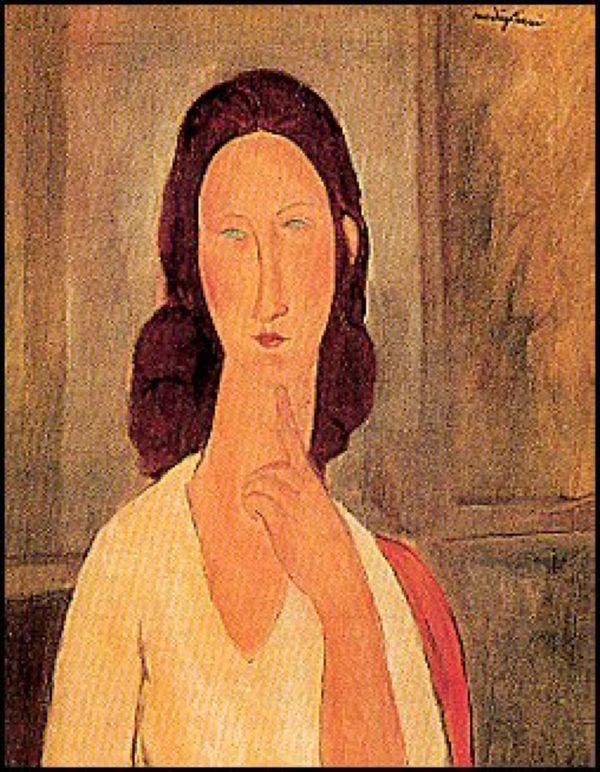
ELMIR DE Hori bogus «painting Amedeo Modigliani». Source: artfakes.dk
Elmir de Hori plunged into the abyss of depression. In 1976, he committed suicide. But before that he managed to write memoirs and become the main hero of the film, shot by the famous Orson Welles (Orson Welles). Wells was a big fan of de Hori and considered him one of the main rigged the XX century. «I had the great honor - my signature forged himself Elmir de Hori!» - Said the director.
A Legros in 1979 was sentenced to two years in prison. But this term has been fully covered in the meantime that he had spent in pre-trial detention in France and abroad, and therefore swindlers released. Legros, heavy smoker, not long enjoyed the freedom of (and support for the daughter of billionaire Aristotle Onassis (Aristotle Onassis)) and in April 1983, died of throat cancer. His podelnik Real Lessard settled in Morocco and wrote memoirs. And Alain Marture are afraid of punishment for aiding Legros, so he decided to publish his memoirs much later, in 2003.
Another rigged, lie predominantly American collectors was David Stein (David Stein). But it brought to light Marc Chagall . The famous painter allegedly saw his work in a gallery window, and said that it was a forgery. Stein was arrested, his name appeared on the pages of newspapers. But his talent falsifiers helped him to continue earning a living: many wanted to buy it now has the official simulation of paintings of famous painters.
expose forgers - it incredibly difficult. There are many reasons why people produce the forgery. Difficult to understand what is happening in their soul. Some pose «falshaki» only because it is an easy way to earn money, while others, like Han van Meegeren, want to teach the critics and experts, others do it just for fun ...
Who all porazvleksya is a mysterious falsifier nicknamed «Fax», managed in the 1980's circle round the most sophisticated Parisian experts. He specialized in still life XVII century. Having spent plenty time restorer of the State Service for the Conservation of Monuments of History and Art, «Fax» has acquired extensive knowledge of pigments that artists have used the XVII century. Besides his work allowed him to thoroughly examine the paintings stored in museum collections. To create a simulation, very close to the original, it remains only to find an adequate foundation, canvas, or a copper plate the desired time. He began to sell their products (just as the first copy) fans. But at one point saw the picture and the dealers have decided that they simply can not fail to be original! Some copies of the originals were found, and the gallery was assailed by their manufacturer orders for still lifes, which could then assign the great French, Dutch and Flemish painters. Some forty works falsifiers received certificates of authenticity, and «Fax», feeling that comes at a dangerous path, decided to leave Paris - out of harm's way.
In the late 1970's to the art-market boom began, and it is currently rigged expanse. Before that they did not have this magnitude - mainly because the majority of auction sales took place in Paris, where experts have «nabili hand» on tracking counterfeit. But gradually auction houses in Britain and the United States have learned new marketing strategies, and money potekli in their country. The U.S. economy continued to grow and is increasingly showing the rich, eager to have a large collections of works of art. Prices for the work of impressionists and modernists popolzli up. In New York, Chicago, Los Angeles, Dallas and San Francisco almost every week there new galleries.
The main problem was that most of the experts who can distinguish a true picture of the «falshaka», were French, not Americans. Inexperienced buyers bought the picture packs are not taking even basic precautions - such as not checking the veracity of the certificate of authenticity. Many certificates have been issued by experts, a puzzle in the works of artists. Some bought the work at all without any documents.
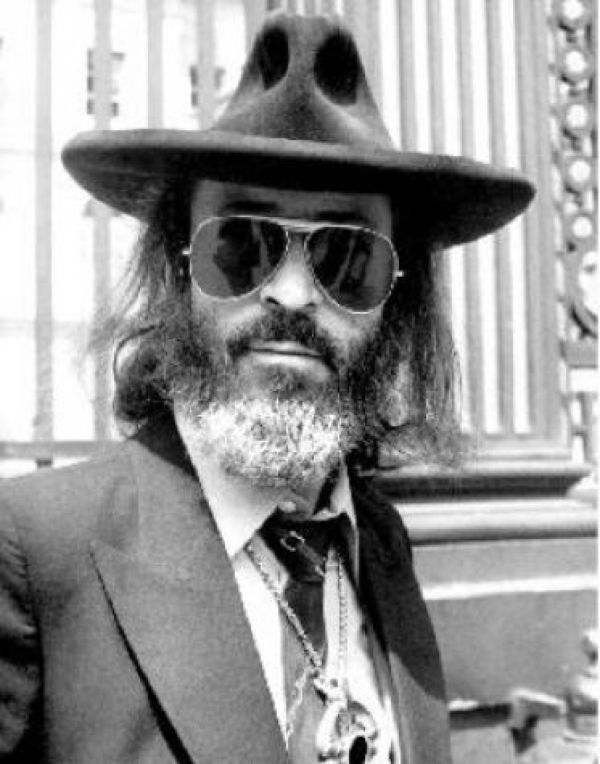
Fernand Legros. Source: styleforum.net
Many owners of small tubes used the situation and began to sell questionable products. Some did not shun to issue their own certificates, which, of course, did not have any value. There are also many enterprising businessmen, like Fernand Legros, built its business by selling fakes.
Of course, not only to American collectors wonder how much a lie. Europe also znavala «vague» times. Just remember, as a few decades earlier the victim had rigged the famous Parisian collector Dyure (Théodore Duret). After his death, the heirs to learn the brutal truth: many Impressionist paintings, and other artists, bought Dyure, were counterfeit.
art market reached unprecedented heights, but he could not avoid the inevitable: the theft and «falshakov». The number of crimes related to art, has grown every year. Villain of the Eastern bloc smeknuli quickly that the increased love of the high can be good money. Works by Marc Chagall, ??? Lisitsky , Suprematists, constructivists and other members of the Russian avant-garde is becoming increasingly popular, and the West «potekli» counterfeiting of their works . In Soviet times there was an entire criminal network that is delivered in Europe and the United States forged work Kazimir Malevich , Natalia Goncharova , Suetin Nicholas , Lyubov Popova .
The number of artists listed on the market, do not stop growing, and industry of counterfeit paintings turned into a gigantic Mahin, second only to industry of counterfeit designer clothing and perfumes. When the Colombian artist Fernando Botero (Fernando Botero) became famous, a whole army plagiarist, copying his paintings and sculptures. U.S. market flooded with fake sculptures Erte , Henry Moore (Henry Moore), Auguste Rodin (Auguste Rodin), Alexandra Arkhipenko , Henri Matisse. The phenomenon reached a peak with the advent of online auction eBay, where each week, and sold hundreds of copies falshivok, attribute Picasso, Matisse, Popova, Botero, Dali, Renoir, Pissarro, Modigliani, Corot, Monet, Rodin, Henry Moore, Diego Rivera (Diego Rivera ), Frida Calo (Frida Kahlo), Natalia Goncharova, Child Hessemu (Childe Hassam), Franz Marc (Franz Marc), August Macke (August Macke), Tamara de Lempitska (Tamara de Lempicka), and many others. This epidemic! Is not known whether it will kill the global economic crisis ...
These are the laws of the market: if there is demand for the product of a painter, then immediately appear and forgery. So it was with Michelangelo, Rembrandt, Watteau, and later with Maurice de Vlaminkom, Andre village, Giorgio de Chirico (Giorgio de Chirico), Tsuguharu Fujita (Tsuguharu Fujita), Andy Warhol (Andy Warhol), Jackson Pollock (Jackson Pollock), Jean - Baskov Michel (Jean-Michel Basquiat), but now with Robert Komba (Robert Combas) and other contemporary artists. In addition to «falshakov», there is a normal copy. But, as we have learned from the fakes and copies - one step. Many criminals are quick to know that it is much easier to forge a painting than banknotes.
We can not be called counterfeit copies of the painters at the beginning of training. Nor can it be taken for the forgery of the work initiated by the artists and their pupils or completed by assistants. The paintings of many famous artists such as Rubens and Rembrandt, were created in this way. In general, a copy - this is an exact reproduction of the painting, while the self-forgery, simulation-style artist. That is to say «falshak» easier issue for the original than a copy: more likely to disappoint the specialist.
In order to easily and quickly earn falsifiers should first select the artist, whom he would forge. Of course, it must be a famous painter or sculptor, well listed in the market. In addition, the manufacturer falshivok must have talent, be familiar with ancient techniques, and colored pigments, «pal» with chemistry, thoroughly examine the compositional methods of forging an artist and create plausible life story work - to make it than to explain the sudden appearance of «miraculously found» masterpiece. In order to avoid the tricky issues expert gambler also needs to know the biography of the artist and the circumstances of his life.
Yes, have been rigged not to everyone. After manufacturing «falshaka» is the next difficult step: you need to find a dupe, to whom it can sell. But many developers do not have the counterfeit business acumen (they are primarily artists), and therefore they need some enterprising Legros, who can successfully conduct their business. And without the help of hard-dealers, even the most talented, simulators are vprosak: sell its first counterclaim «and then the blood» written forgery, even for a small price. Without knowledge of technology marketing and PR has nothing to do here.
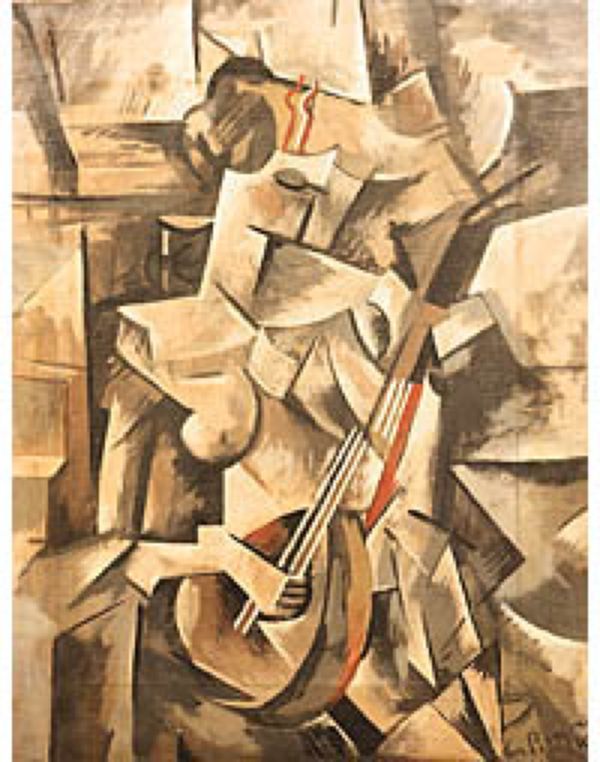
Counterfeit drawing by Picasso from the auction eBay. Source: ebayfakes.com
It should be noted that the creation of forgery and use of them for their own ends brezgovali not even a very famous historical characters. For example, Pope Clement VII commissioned a copy of another portrait of Pope rafaelevskogo, by Leo X, and gave her Frederico II Gonzaga, assured him that it is original. Industry «falshakov» not be widespread until the size, if not the characters are well able to deceive naive people. These include the rights to speak initials P. R. - very charming swindler.
P. R. to be a shining success of top managers, living with a charming young wife and charming children, a luxurious villa in the fashionable suburb. All this was part of its strategy to cheat trusting lovers of art. He placed in newspapers and magazines on art, ads, which offered to buy some pieces from his large art collection. He thought out the various reasons for which he was «forced» to sell the paintings and sculptures: a swimming pool should be built, then to finance some urgent work. Found it on the ad buyers P. R. selling original work on a small price, do not forget to show them other items from his collection, which he «in case of need» also going to sell. Of course, elated customers come to the P. R. again, but this time were already «falshaki». He even enjoyed the confidence of Parisian dealers who sometimes lend masterpieces from its collection. Pictures for some time hung on the walls of galleries, but they want to buy P. R. explicitly made it clear that to part with them is not going to. Naturally, the work of acquiring fame very rare and inaccessible works, that is «tasty morsels» collectors. P. R. also often visited the Parisian auction room Druo, where from time to time to place bets and talked to appraisers. So an enterprising businessman has created a reputation of serious collectors and a very important person in the art market. In the ten years that the scam has evolved, he was able to circle around the fingers of tens of people. Even after the appearance in the weekly Le Point razoblachitelnoy article P. R. continued to appear in showrooms and antique trade in fakes at your villa! It offers guests champagne, while his lovely wife and a child at the hands entertained their conversations. But justice does reached falsifiers. In early July 2005 he was sentenced to five years in prison. And his charming wife have a subscription to house arrest.
I wonder how many more of these swindlers wanders around the world? Quite clearly we can say that the forgers will exist as long as there are art lovers who want to buy some high quality product at a great price. When a diamond has been considered a gemstone, there immediately appeared forgery. Same with art.
fakes, and theft - this curse for collectors. From both attack can protect themselves. But if you can avoid theft, tightened security at his house or apartment, a guard against forgery as much more complicated. We encountered an unknown work of art and determine its authenticity is not the same thing. The latter is much more difficult, especially since most experts verdict is negative, or mixed. Upon learning that the model Dzhambolonya statuettes made in Florence around 1660, was recently offered for auction in the Hotel Druo of unprecedented price of 1.2 million euro, a collector who purchased 20 years ago seems to have asked the expert thinking and his statue to reach the appropriate price. However, the expert explained to him that his statue was made for half a century later, in the workshop of tapestries, and that in his view, its price will not exceed 50 thousand euro. However, the same expert estimated the only 30 thousand model, later sold to magnificent price, on the grounds that the inventory number, indicating the membership of a collection of Richelieu, was etched under the patina, which in the opinion of an expert, indicating tampering. However, if the number was under the patina, it is meant that the bronze statuette was later suffered another layer of patina, which in theory should reduce its price.
That is what is considered to be original, not always it is. Sometimes the opposite happens - the expert finds the most fake true original. You can say it all depends on the certificate.
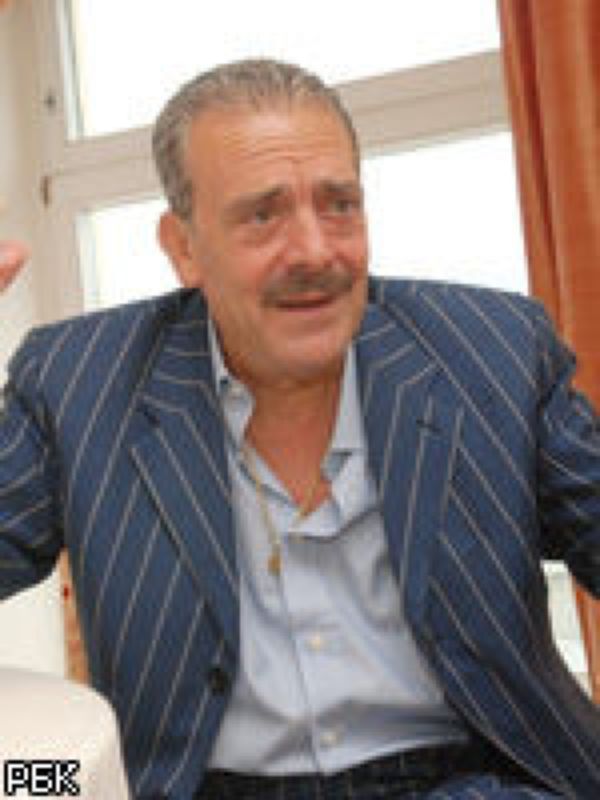
Robert Delaunay The joy of life.
Source: cs.wustl.edu
Everyone knows that artists often copy their teachers during training, but often forget that plagiarism may be unconscious. With its own style of painters often use other people's findings are not aware of this. A criticism of this notice ... or close to the eye.
In the early 1950's, the famous American art critic and theorist Clement Greenberg (Clement Greenberg) raises up to heaven, some artists, mainly abstract expressionists (such as Kenneth Noland (Kenneth Noland)). If it were not for the enthusiasm Grinberga, history of art would have been very different. Critics argue that the work of Noland did not have anything in common with works by Robert Delaunay (Robert Delaunay) 1910-ies, but also argued that another American expressionist, Barnett Newman (Barnett Newman), is not bound to one of the «founding fathers of abstraction» Pete Mondrianu (Piet Mondrian).
In the book «How I became a seller of paintings» Tariq Sami (Sami Tarica) quoted a French psychoanalyst Siboni Daniel (Daniel Sibony), who writes about the complex «first second-»: «The strategy, which is replete with examples of history ... is that whoever comes second, does not recognize that he is something borrowed from the first, does not speak of their intentions to beat him or anything else but doing everything possible to be the first, despite the fact that he is not. And because of this violence over the chronology of events occurring variety madness ». That is the straight vertical line of Barnett Newman in which he became famous, with its predecessors, which is very famous.
Clement Greenberg considered to artists-abstraktsionistam and the famous representative of the French «non-art» (Art Informel) Fotre Jean (Jean Fautrier), although he denied it with vehemence approval. Path to Success Fotre was arduous. He ignored the galleries and collectors. In 1955, after another unsuccessful exhibitions, Polanyi wrote to Jean (Jean Paulhan): «You always told me that the great artists at the beginning of a career has never been able to sell their paintings. You can rejoice over me: neither one of my work at the exhibition had been sold! »Only by Tariq Sami, carpet dealer, to retrain in the art-dealer, pictures Fotre finally found buyers. Once the artist Tariq showed dozens of Serge Poljakova , which is very proud of. Fotre said that of all postkubistov Polyakov, probably the best. By these words he meant that among the «post-» and «true», there is a fundamental difference. On another occasion Tariq led to Fotre customer-American artist who has requested 1 000 francs for the picture. American said it was too expensive. Then Fotre up a cabinet of six similar cloths and announced that they are sold at a price of 10 francs apiece. At issue osharashennogo client why a painting is sold so cheap, so cheap and the others, with fervor Fotre answered: «Because some of these [for 10 francs. - Ed.] Wrote, my mail address». The American left, so did not bought. And in vain: in fact it was a series of «multiple originals», which later became famous.
When Sami Tariq arrived in New York, it shocked the importance that Americans attach to works of abstract expressionists. For him, painting Shana Ben (Ben Shahn), Jack Tvorkova (Jack Tworkov), Gaston, Philip (Philip Guston), Robert Mazeruella (Robert Motherwell), Franz Kline (Franz Kline), And his pupil Jean Fotre, looking at paintings of abstract expressionists, asked themselves how an artist can maintain the integrity of the «I», bringing himself to sacrifice fashion. While American expressionism gained popularity for his works, no one paid attention. Even when Fotre handed one of his paintings as a gift to the Paris Museum of Modern Art, the museum has refused to accept it, because «it is not painting». Then Tariq Sami, and thought that maybe those who speak the truth before time, just harder to be heard.
In 1959 Fotre invited to the Biennale in Venice - to the displeasure vyaschemu Gilda Caputo (Gildo Caputo), the then President of the French trade union vendors paintings. He wanted to Biennale of France went Manesse Alfred (Alfred Manessier), but the union members chose him to the Franco-German artist Hans Hartunga (Hans Hartung). Since last Fotre and shared the Grand Prix. The jury wanted to give a majority Hartungu, but Sami Tariq managed to get many of its members (particularly those who arrived from Poland) that than vote for the «nominee capitalists», to better support the poor artist, who do not even have a gallery.
Once Sami Tariq tried to persuade millionaire Gunter Sachs (Gunter Sachs) to support the money of another famous artist, Yves Klein (Yves Klein). Sachs agreed, but at dinner Tariq told him about the performance Klein called «Zone soft painterly sensitivity», in which he exchanged the empty space in the city of gold, that is actually sold «nothing». Millionaires angry: «What do you want me to buy anything? .. All, I am not involved in this ». Not everyone is given to understand the difference between a gesture in art and spent «in emptiness» money.
Fotre addition, Klein and some others, most contemporary artists unconsciously expropriated elements of styles of his predecessors. Even Maître such as Pablo Picasso, inspired by works by other artists, and much they borrowed. One could say that Picasso was the greatest plagiarist in the history of painting - in fact he did not think of her, even cubism and he founded the George Marriage (Georges Braque). And at the beginnings of this style was Paul Cezanne. Yet Picasso's commitment to the borrowing does not detract from his genius, and the Spanish-French painter considered to be the greatest painter of XX century.
Many artists absorbed in their ideas and style of the other, making their work more attractive to major collectors. Why Alfred Manesse, which praised in 1959, found no such glory as Serge Polyakov and Nicolas de Stal ? Yes, simply because they were much more «raskrucheny» on the market. All art lovers know Byuffe Bernard (Bernard Buffet), but no one remembers those who work in the mid 1940's were very similar to the creation Byuffe. In late 1950, many dealers are taunted Fotre and Klein, who later became a much more honored artists than those whose products they sell in their galleries. Fotre called such artists «postkubistami», and thought himself a creator «true» painting.
Borrowing - this is not copying or plagiarism, but the demonstration of (often unconscious) of any influence. When we look at a picture of one artist, we often lovim myself thinking that it resembles the work of someone else. You can perform an experiment: go to a museum, to stand at a distance of ten meters from the picture and try to guess the author. At such a distance by Sebastian Bourdon (Sébastien Bourdon) can be confused with Pussenom Nicolas (Nicolas Poussin), Antoine Watteau - with Nicolas Lancret (Nicolas Lancret), Johan Bartholdy Yongkinda (Johan Barthold Jongkind) - with Budene Eugene (Eugène Boudin), Paul Gauguin ( Paul Gauguin) - with Paul Seryuze (Paul Sérusier), Henri-Edmond Cross (Henri-Edmond Cross) - with Paul Sinyakom (Paul Signac). Prior to inspire Lancret and Patera, Jean-Baptiste (Jean-Baptiste Pater), Poussin, much borrowed from Gilles, Claude (Claude Gillot). John Constable owe Jelly Claude (Claude Gelée), Constable, in turn, is obliged to Jean-Baptiste Camille Corot, Corot paintings inspired Eugène To be rather Budene - Claude Monet. And Picasso said, before becoming the father of cubism, went through academic passion, and later in creating sculptures inspired works of Julio Gonzalez (Julio González).
In general, the art of borrowing on hold. They are necessary for its evolution. When there are new currents of art and artists constantly borrow ideas from each other and from their predecessors. Some are lucky - they find a dealer with a good scent marketing. Of course, some would consider them a deceiver (as Fotre abstract expressionists), but this does not prevent their ascension to Olympus. For many it may seem unfair, but success in the world of art depends mainly on luck. Refer to the same Serge Poljakova plagiarist would be at least disrespectful, but you can not deny the fact that he, like many other famous artists, subconsciously «steal» from their colleagues.
Is it possible to call plagiarism trend? .. For example, fovizm became heir divizionizma: Case initiated Sulfur Georges (Georges Seurat), was continued and the village of Maurice Andre de Vlaminkom, and they intercepted the torch to George Marriage, Henri Matisse, Henri Mange (Henri Manguin), Oton Friez (Othon Friesz) , Kees van Dongen (Kees van Dongen), Jean PUY (Jean Puy), and others. Same with cubism: pioneer by Marriage and Picasso, «picked» GRIS, Juan (Juan Gris), Henri Eydan (Henri Hayden) and Louis Marcoussis (Louis Marcoussis), and developed their ideas of artists abstraktsionisty. The principles enunciated initiate movements (Cubism, Suprematism, Constructivism, Futurism, Surrealism, abstract art, muzykalizma and many others) were based on conscious and unconscious borrowing. But their work is, of course, are not imitations. Falsifiers - this is who these art-terrorists. This will tell you of any expert.
Permanent link to:
https://artinvestment.ru/en/invest/stories/20080818_brief_history_of_forgeries.html
https://artinvestment.ru/invest/stories/20080818_brief_history_of_forgeries.html
© artinvestment.ru, 2025
Attention! All materials of the site and database of auction results ARTinvestment.RU, including illustrated reference information about the works sold at auctions, are intended for use exclusively for informational, scientific, educational and cultural purposes in accordance with Art. 1274 of the Civil Code. Use for commercial purposes or in violation of the rules established by the Civil Code of the Russian Federation is not allowed. ARTinvestment.RU is not responsible for the content of materials submitted by third parties. In case of violation of the rights of third parties, the site administration reserves the right to remove them from the site and from the database on the basis of an application from an authorized body.






